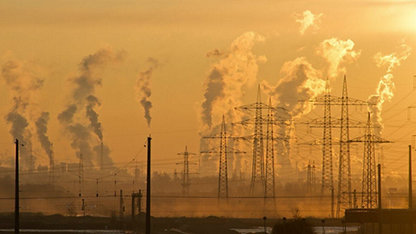Urbanisation is placing increasing demands on our most precious commodity: water. What can we do to staunch the flow before it runs out?
Cities are drying up. In early 2015, the reservoirs that supply almost half of the 20 million people in São Paulo’s metropolitan area were almost empty; immediate concerns were alleviated after heavy rainfall at the end of that year. The UN deems an area to be experiencing water stress when annual supplies drop below 1,700m3 for each person. In São Paulo two years ago, the figure was 200m3, or “absolute scarcity”. At the same time, 9,000 miles away, Brisbane’s drought affected more than 80% of the state of Queensland, with rainfall in late 2015 providing some respite. The Yemeni capital Sana’a could run out of water this year, while a recent poll found that Californians are more concerned about water scarcity than employment or the economy. Is this the new normal? And if so, what are we doing about it?
Almost half the global population could be living in areas of high water stress by 2030. That is less than 15 years away. But despite the stark predictions from organisations such as the UN and the World Bank, water scarcity has failed to gain the same traction as the energy or carbon agenda. That is starting to change. “If you look at the World Economic Forum’s Global Risks Report for 2015, the number one risk in terms of impact is water crises, and five of the top 10 global risks have a water element to them,” says Justin Abbott, Arup’s global water skills leader.
Denser urban populations, rising living standards – people tend to use more water the better off they are – and increased instances of drought means that water resources, such as surface and groundwater bodies, are replenishing more slowly. For rapidly developing cities, water scarcity is often not simply a question of how much water a city has, but of the equitable distribution of those resources, contamination and leaky infrastructure.
“When it rains, it’s seen as a problem. That needs to be seen as an opportunity. There’s potential to offset 40-50% of demand where harvesting is possible.”
Sean Lockie
Climate-KIC
Technically, says Abbott, we have the knowledge and the expertise, and the exemplar cities, to be doing a lot more to alleviate water scarcity. There is huge potential to reduce demand through increased efficiency, harvesting and reuse, for example. But there are some fundamental issues holding progress back. Water is too cheap, for one, making it difficult to bring in investment. And conversations about city resilience tend to be framed in terms of flooding. “Water scarcity is starting to come through, but I suspect it’s three or four years behind flooding,” Abbott suggests.
Sean Lockie FRICS, a director at Climate-KIC, says our perspective on water needs to be turned on its head: “When it rains, it’s seen as a problem. That needs to be seen as an opportunity. There’s potential to offset 40-50% of demand where harvesting is possible.” Faithful+Gould, where Lockie was sustainability director, has been working on projects around London in the UK that focus on reducing water demand through rainwater harvesting and, increasingly, grey water recycled from household appliances, bathtubs and showers, but these are still the exception rather than the norm.
The low cost of water helps explain why this is the case, but it is not the only reason. In 2013, a survey of built environment professionals, conducted for a Construction Industry Research Information Association report, found that 83% of respondents believed water management is considered too late in the planning and design process of developments. Lockie cites a lack of awareness of what is available as another problem. “We found that [utilities provider] Thames Water provides incentives to build attenuations – systems to hold or store excess water – into existing buildings because it has a positive effect on downstream flooding that, in turn, has a positive effect on the water quality of London’s River Thames. But no one knows about it. It’s not as engaging as the carbon agenda.”
As is the case with flooding, water availability can limit development opportunities. Existing or anticipated shortages can force regulators to restrict housebuilding in some regions. State laws in California in the US, for example, require water agencies to withhold approvals until it has been proven that, to serve large, new developments, sufficient water exists for at least 20 years.
In the Australian state of Victoria, a different item of legislation is shaping the future of urban development. After more than a decade of drought was broken by successive floods in 2010-12, the Australian government was forced to rethink its relationship with water. The result has led Victoria to introduce requirements for all new, large-scale housing developments to use water-sensitive urban design (WSUD).

Desert oasis river
Professor Tony Wong, chief executive of the Cooperative Research Centre for Water Sensitive Cities in Melbourne, says that cities typically treat issues of water supply, flooding and water pollution separately. By contrast, a WSUD approach tries to keep water in the city by addressing all three through a common infrastructure.
In Wong’s city, every house would have two water supplies: one for drinking and one for other uses. “As much as 80% of the water we consume in a house doesn’t require drinking-water standards. So why don’t we preserve the drinking water?” he posits. “Our cities are actually water catchments. We can use green infrastructure to remove the contaminants so that storm water becomes a resource, and protects the rivers and bays it discharges into. If that green infrastructure is connected to create green corridors, it can provide safe passage for floodwaters. This can all be delivered if we think and plan our cities from this perspective.”
It is a bold ambition and one that Australia is serious about. Wong’s centre has a healthy research budget of A$100m ($74.8m) that is now guiding more than A$100bn ($74.8bn) of capital investment by the country’s water sector and some A$550bn ($411bn) of private-sector investment in urban development. The idea is not to deliver a water-sensitive city in one go, says Wong, but “through each new development, so that gradually a city transforms itself into a collection of water-sensitive precincts”.
If adoption of WSUD outside Australia has been slow, it is because “people stick to what they know”, says Alec Pavitt MRICS, divisional MD at Mott MacDonald. Equally, there is a risk, he adds, that some cities go straight to desalination as a solution, because it allows existing systems to continue developing along historical patterns. But this is not the story everywhere. Pavitt says that Mott MacDonald is developing integrated water resource plans that start from the catchment level and require alignment of many political and institutional stakeholders.
Creating this capacity to work across the catchment area can make the difference, says Pavitt. “Cities with a strong political and social will, together with coordination and cooperation across their government departments, will be better placed to address equitably the water scarcity challenges of the future than those that do not.”
The global response to scarcity has not yet equalled the challenge. Yet we have the knowledge and technology to manage our water resources sensitively. What is missing is a water price that reflects its true value to society.
If organisations can start to cooperate as stewards of a catchment area, water management is likely to be more cost effective and the benefits more widespread. The business case for a new way of planning and designing with water might just start to stack up.












